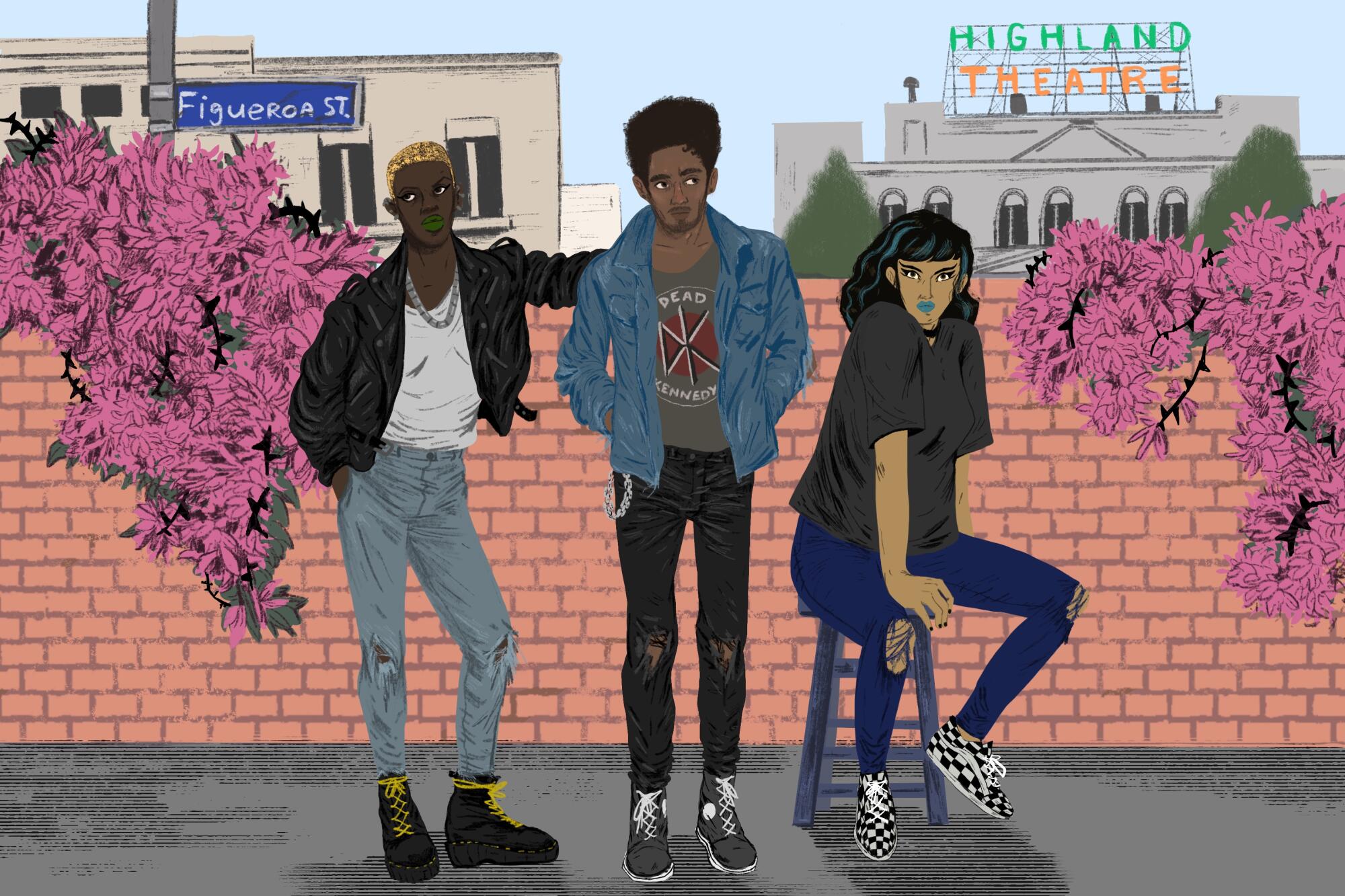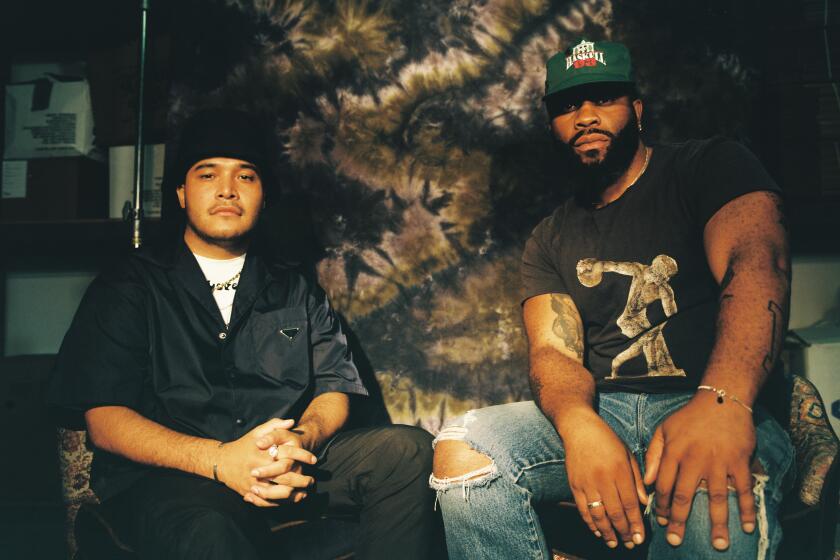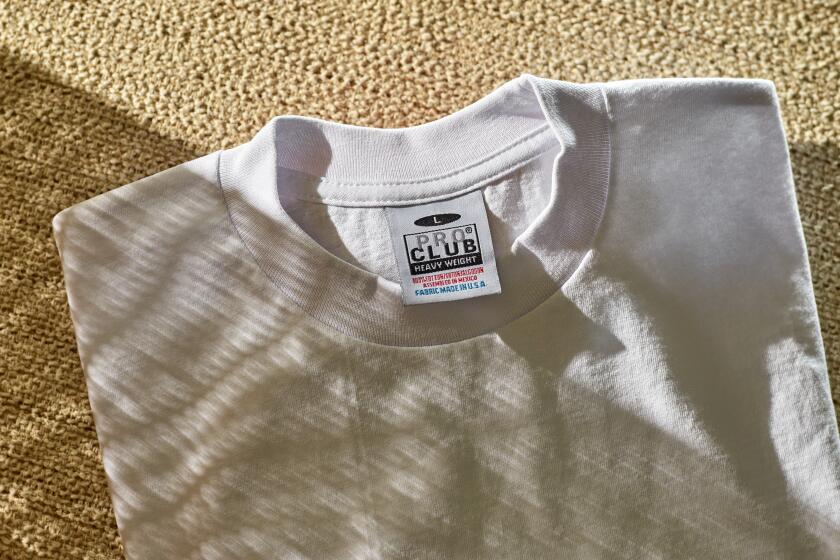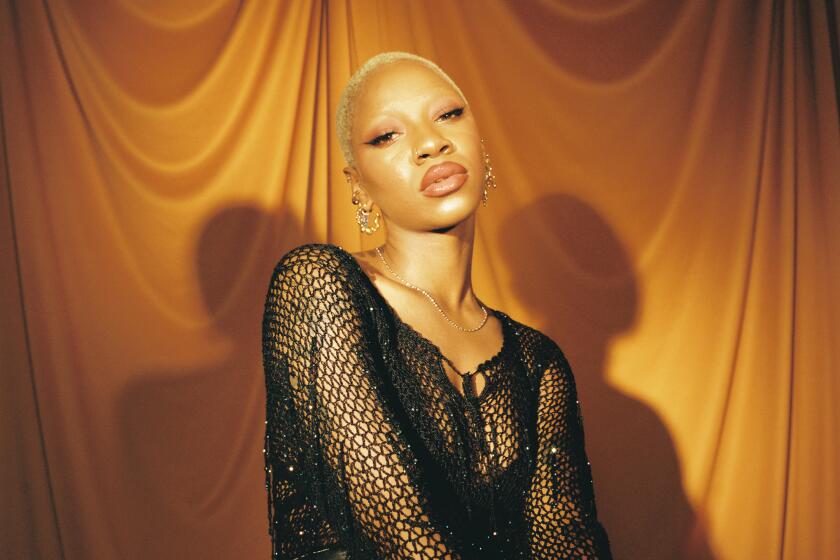
- Share via
This is part of Image Issue 4, “Image Makers,” a paean to L.A.’s luminaries of style. In this issue, we pay tribute to the people and brands pushing fashion culture in the city forward.
I bought my first pair of jeans in almost a decade last month — a modest pair of Uniqlo straight-leg, light-wash jeans with the exact amount of stretch I need in the “expanding waistline” portion of my life. Denim is not my thing. It’s coarse, overly casual and makes me think of weekends spent with my parents getting lost in our local Costco. A good pair of jeans that fits well can make you look like a pop star or a rugged individualist. An ill-fitting pair can transform you into a harried salesman at a trade show or Napoleon Dynamite.
But what constitutes the perfect fit? That’s far from a settled matter, though the residents of Highland Park, Lincoln Heights, Eagle Rock and the many neighborhoods that make up Northeast L.A. seem to have sided once and for all with that icon of the mid- to late 2000s: the skinny jean.
Wander around Highland Park long enough and you’re likely to see tight black jeans, wallet chains, Converse All Stars and all manner of other accoutrements of the bygone Obama era. While neighborhoods like Virgil Village and Silver Lake just seem to get younger as they further gentrify, Northeast L.A.’s gentrification rate might register an 8.5 on Pitchfork.com. If you don’t know what Pitchfork is, you’re not in the demographic I’m talking about. If you do, you might still be going to music venues like Permanent Records Roadhouse, or maybe you enjoy reliving the glory days of the Hi Hat (R.I.P.). Some people might even call you a “hipster,” that outdated catch-all term for anyone who thought they were cool in their 20s. Whatever that word meant back then seems irrelevant now, because, whether we like it or not, time hasn’t stopped passing.
Every few years, the expectations for how a pair of jeans should settle on your body change. You might have rocked low-rise or boot-cut in the early 2000s. Then, as you got older, you got those stiff, selvage jeans from A.P.C. Now, you’re maybe wearing them high-waisted and elastic. When I was in high school, the truly edgy choice was JNCOs, the baggy jeans from the ’90s popularized by ravers and devotees of the Insane Clown Posse. JNCOs were wide enough that, under certain circumstances, you could fit a whole other person inside the pant legs if the occasion called for it.
I remain flabbergasted by how JNCOs became popular in the first place, but it’s not for me to worry about. They appealed to someone. In fact, they appealed to lots of people for a long, long time. Jeans are a way to define subcultures even if those subcultures ultimately become the dominant culture. Hippies, ravers, punks, hip-hop fans, jocks, nerds, moms and dads: There’s a pair of jeans for every sensibility. That’s the thing about jeans. They’re a deeply personal expression of who you are and what social circle you feel like you fit into; but they’re also time capsules, windows into specific moments in our shared cultural history. The way jeans fit (or don’t) can remind you of a place and a time in your life, a period of youth or personal growth or full-on misery.
The shape, the cut and the fit of jeans can change, but the rest of it pretty much remains immovable. Hence, we tend to develop an emotional connection to them in ways that we don’t with other garments. The Gen-Z TikToks clowning millennials for clinging to skinny jeans from last spring hurt precisely because jeans are something we associate with youth, vitality, coolness and rebellion. If a person younger than you tells you to cut up your skinny jeans and “burn them,” it’s not just a shrewd piece of fashion criticism. It’s a means of drawing a line between the kids and the olds.
Image Makers stories
Jason Parham on the white T-shirt that changed L.A. fashion forever
Streetwear gods Kids of Immigrants know love is a long game
Sami Miró has the secret to making sustainable fashion work
The Paisaboys let us in on the long-running inside joke behind the gear
Porcelain Sneakerhead sends her regards
A New York Times trend piece ignited the debate all over again back in April, declaring, “Loose, even baggy, jeans for women and men were booming and poised to become a hallmark of our post-pandemic world.” Even the man who made skinny jeans a cultural phenomenon, former Saint Laurent designer Hedi Slimane, is blowing out his jeans in his current role at Celine. To wear skinny jeans now is to run the risk of seeming out of touch.
Maybe that’s why I haven’t bothered with jeans in so long. They’re too tied up in generational angst. The minute I commit to a pair, I’ve committed to an idea. I’m too wishy-washy, noncommittal and eager to please to tie myself to a trend. No one’s ever gotten mad about a pair of sensible navy trousers. Who has an emotional attachment to khakis besides the guy from the State Farm insurance commercials? If I don’t play the game, I can’t lose.
That’s what’s so noble about the wandering hipsters of Northeast L.A. No one is challenging the skinny supremacy of their jeans. The people of Highland Park aren’t just going to chuck their Urban Outfitters denim in the bin. The skinny jean dream is not dead for the late-30s bohemian hopeful who still puts buttons on their jacket lapels. Stretches of Northeast L.A. might make you feel like time stood still back in 2009.
There’s still the taint of guitar strings and navel gazing in the air all around Northeast L.A., but that’s not the natural scent of the place. This was and remains first and foremost a working-class community — with auto body shops, corner stores and panaderias lining York Boulevard. Time doesn’t actually stand still. Places like Highland Park are being jerked into a brand-new world, where every year people move with the hope of remaking the area in their image.
There’s something special that happens when Daniel Buezo and Weleh Dennis get in a room together. They have a bond, forged through the creation of their brand Kids of Immigrants.
If the grocery store you like isn’t in your neighborhood, don’t worry. It’ll open there soon enough. Don’t like the bars because they don’t play the music you prefer? Be patient. Gentrification is not necessarily the act of moving to a new neighborhood. It’s when your presence fundamentally changes the fabric of a place to suit your needs. It’s sort of like that with jeans. That idea of the “perfect fit” and the way people criticize others for how they wear their jeans is a form of fashion gentrification. Millennials don’t like baggy pants, so baggy pants should go away. Gen Z doesn’t understand why millennials wear skinny jeans and they should all throw their pants in the dumpster.
But that conformity might actually bring some people together. Maybe it’s that a lot of younger people grew up listening to Morrissey. Maybe they found themselves in the 2000s hipster culture that was so willing to co-opt blue-collar aesthetics. No matter the motivation, skinny jeans seem to cross ethnic and cultural barriers. It doesn’t matter if you grew up in Northeast L.A. or just liked being able to walk home from the York on a Friday night. You probably have to squeeze into your pants in the morning. What brings us together more than the shared feeling of being incredibly uncomfortable after a large meal? I gave up the skinny jeans thing a long time ago, because they just didn’t fit. But really, there’s no such thing as a perfect fit — if it’s a neighborhood, a generation or a pair of jeans.
Dave Schilling is a writer, humorist and appreciator of fashion whose work has appeared in the New Yorker, the Guardian, New York Magazine and GQ. He is also the host of the “Galaxy Brains” podcast.








